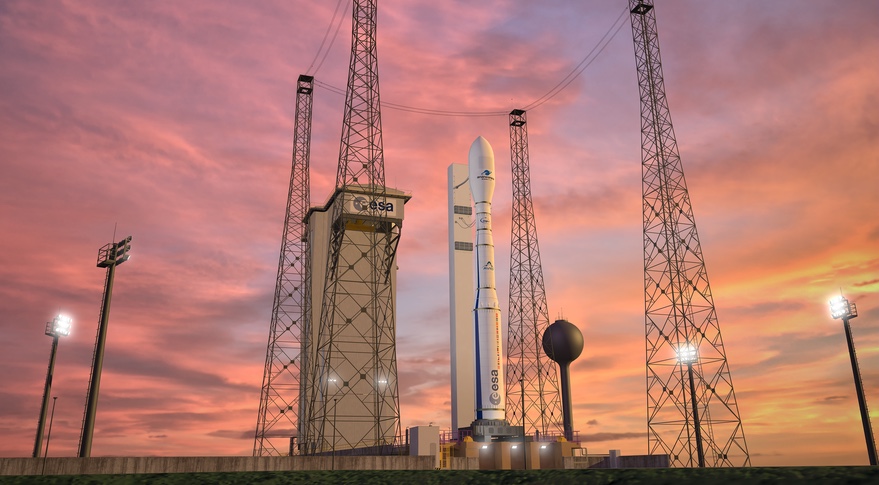COLORADO SPRINGS — The European Space Agency will launch its Sentinel-1C radar imaging satellite on a Vega C rocket in 2023 as the agency continues to study potential impacts of Russia’s invasion of Ukraine on that launch vehicle.
Arianespace announced April 7 that it won a contract from ESA to launch Sentinel-1C in the first half of 2023. Neither the company nor the agency disclosed them terms of the contract.
The selection of Vega C was expected, since planning for the mission anticipated it flying on the Vega C rather than the much larger Ariane 6. The first two Sentinel-1 missions launched on Soyuz rockets from French Guiana, but Russia terminated Soyuz launches from that spaceport in February in response to European sanctions on Russia after the invasion of Ukraine, and even before that ESA was phasing out its use.
There had been discussions earlier this year that the launch of Sentinel-1C could be moved up because of a malfunction of Sentinel-1B that took it out of service in December 2021. The spacecraft remains out of service because of problems with the power system for its synthetic aperture radar (SAR) imaging payload.
At a March 17 briefing, ESA officials were pessimistic about recovering Sentinel-1B, even as efforts to restore the SAR payload continued. “It doesn’t look very good, but for the moment it’s not the final word on 1B,” said Simonetta Cheli, director of Earth observation at ESA.
She said then that Sentinel-1C would be ready for launch as soon as October, although at the time it was not scheduled to launch until the middle of 2023. “We are assessing, in the current situation, options with Arianespace for launch. We are looking at the earliest options because we want to support the users.”
At the same briefing, ESA officials noted a potential issue with the Vega C, an upgraded, more powerful version of the existing Vega rocket scheduled to make its first launch by the middle of this year. The rocket’s upper stage, called AVUM, uses a liquid-propellant engine built by Ukrainian company Yuzhmash. Russia’s invasion of Ukraine raised questions about the long-term availability of the engine.
At the March briefing, Daniel Neuenschwander, ESA’s director of space transportation, said Yuzhmash had delivered three of the engines, enough for Vega launches in 2022. The agency was considering options to potentially replace that engine with alternatives from both European and other sources, he said.
Avio, the prime contractor for Vega, issued a statement March 25 downplaying any risk of losing access to the Ukrainian engine, saying it regularly received engines and has built up a “strategic stock” in reserve. “As of today Avio does not see specific risks related to the availability of engines in the medium term,” the company said. It did not respond to inquiries about the number of AVUM engines in reserve.
In an April 6 interview during the 37th Space Symposium, ESA Director General Josef Aschbacher said three more engines had been delivered. “We now have enough AVUM engines for the flights in ’22 and ’23,” he said.
He said ESA was continuing to look at alternative engines for Vega C missions beyond 2023. “There we have different options that we are pursuing now: European but also with the U.S.”
“For Arianespace, this contract is a sign of the confidence in the Vega C system and a strong sign of the commitment of European institutions for an autonomous access to space,” Stéphane Israël, chief executive of Arianespace, said in a company statement about the launch contract.
